"Growing a Rainbow": Accessible Ideas for Children with Multiple Disabilities
Submitted by lelusher on May 08, 2017
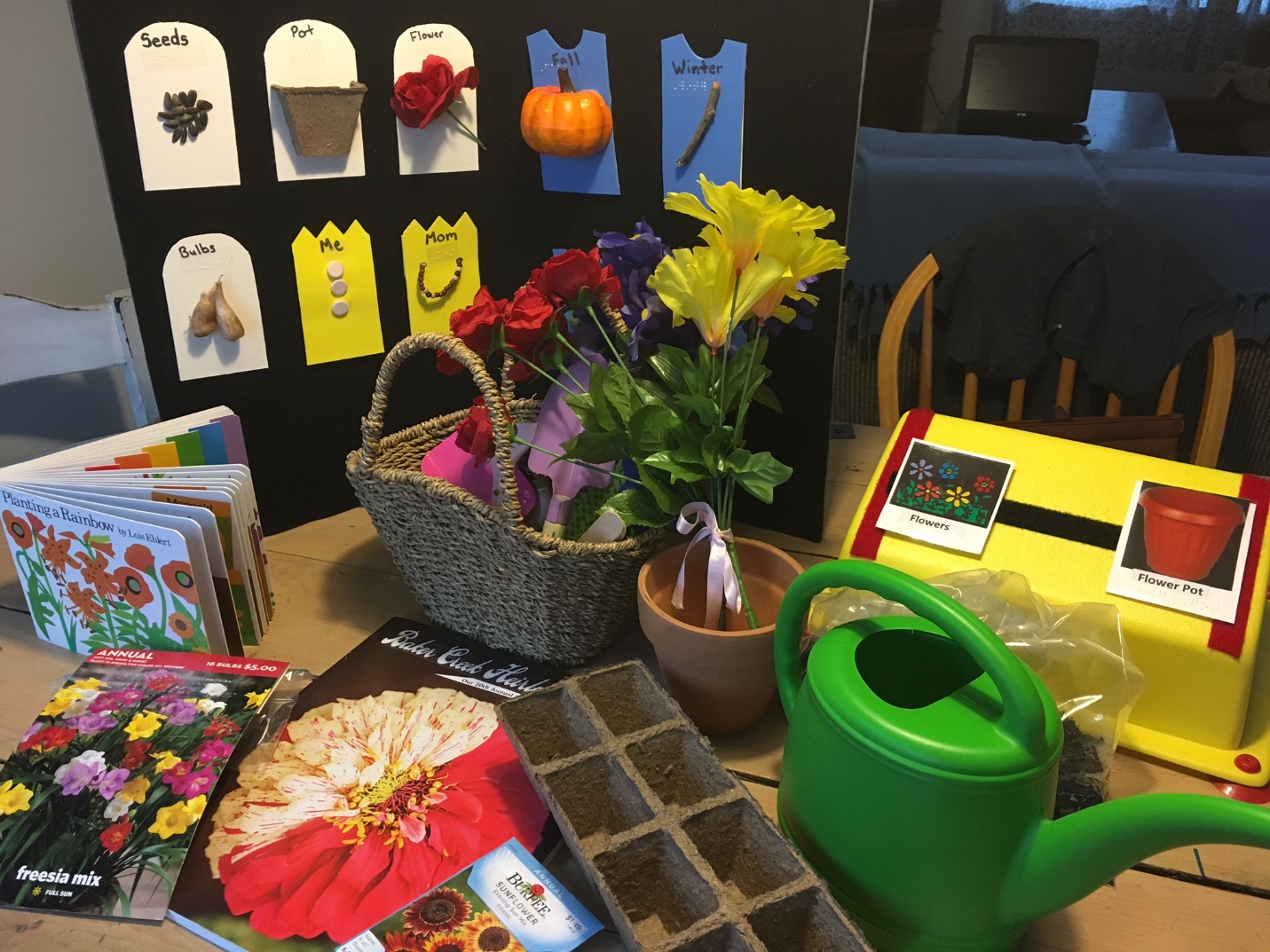
As part of the graduate coursework for Visual Impairments and Multiple Disabilities in the Teacher Preparation Program in Visual Impairments at the University of Kentucky, students were asked to complete four projects: Story Box, Picture Communication Symbols for Story Box, Tactile Communication Symbols, and Talking Book Project.
We are sharing them on Paths to Literacy and hope that others will use them! Please add your comments at the bottom of the page. This project is based on Growing a Rainbow by Lois Ehlert.
Teaching Basic Concepts to Preschool Students
I chose the book Growing A Rainbow by Lois Ehlert to center my project on. Because I work with children under three years old, I wanted to pick an appropriate book for them. Spring is a perfect time to talk about flowers and gardening. Because no matter whether you live in the city or country, you can find something growing, whether it is a tree, a flower, corn, or even a dandelion, it is easy to go outside and work on the concept of plants growing. I would start by taking the child outside, touching small plants that are poking up out of the soil, and then touching trees to feel how big they are. We could then talk about what is different and similar about them, explore the different shapes and sizes of leaves, flowers, and stems. Also, we could talk about how they all need sunshine and rain to grow and survive. I would also incorporate into this project that some of our food grows from seeds and on trees. I believe it is very important for children to know where their food comes from and that they can grow some of it themselves, either in the ground or in a pot. I would include a project of planting bulbs and seeds from the story box, inside in pots and then transplanting them outside to see what happens. Using markers with print/braille to identify the different types of plants will help children learn that plants can look and feel very different. A trip to the local nursery would be a good way to build background knowledge for this child.
Additional activities to build concept knowledge include growing vegetables from scraps. This would involve taking carrot tops, celery bases, beet bases and lettuce bottoms, and placing them in water to watch them sprout. Once they have started to sprout leaves, these could be transplanted outside. Another activity would involve having a sensory table filled with dirt. Exploring which vegetables grow under the ground (potatoes, beets, carrots) and which grow above the ground is a sensory activity. The child could have access to small trowels and hand-held rakes to “work” the soil, and also pots to put the dirt in. Again, planting seeds in a pot, watering them and placing them in a window to observe the growing process, would be a way for the child to gain knowledge about how plants grow.
Story Box
Included in this story box project are items to help the child have a better understanding of the objects represented in the story. I have chosen objects like seed packets with both large and small seeds, gardening gloves which might be worn while digging in the dirt, planting pots for starting seeds, different types of flowers to represent the “rainbow” of flowers, a watering can, a seed catalog, and dirt. Flower bulbs are also included, so that the child can get a better understanding that not all flowers or plants grow from seeds. They can grow from bulbs as well, which can look very different, depending on the type of plant. I have also included a marker with flower names for putting in the ground beside the seed so the student can identify which type of flowers are growing.
Tactile Cards
The tactile cards represent different parts of the story. The seasons are each represented with an object based on what you might find outside during that time of year. A twig for winter because the trees are bare, green leaves for spring when the trees are just getting their leaves, a pumpkin for fall, and a seashell for summer, which represents summer vacation. Because mom is mentioned in the story, a necklace represents her. The child is represented by buttons from a favorite dress. Seeds and bulbs have been glued on a card so the child can feel them.
Questions I would ask the child include:
- Who helped plant the rainbow?
- Why did they call it a rainbow?
- Where do the seeds come from?
- What do they plant in the ground?
- When are the bulbs planted?
- What is used to plant the seeds and bulbs?
- Where are the seeds planted?
- When do they go to the garden center and plant the seeds?
- What happens when the spring warms the soil?
- What happens all summer long?
Picture Symbols
The boardmaker cards could also be used for answering questions. These cards show items represented in the story, including a shovel to plant the flowers with, a rainbow, a rain cloud, a packet of seeds, gardening gloves, a flower pot, and a wagon.
Depending on the child’s needs, I have included two different adaptations for presenting the cards. A yellow slant board could hold 1-3 cards for a younger child or a child who needs more time for making choices. The felt board can hold more cards for an older child or for other activities. Besides using the cards for answering questions, the child could also put the cards in sequential order or could rearrange them to make up their own story.
The story box is housed in a burlap planter. I chose this to place the items in because I wanted this to be a hands-on activity. This planter is very lightweight and everything in it is perfect for little hands to explore. After reading the story and exploring everything inside the planter, I would help the child fill the planter with dirt, plant the bulbs and seeds, water them, and watch the rainbow grow!
Talking Book
Because of copyright law, we are unable to share the link to this.
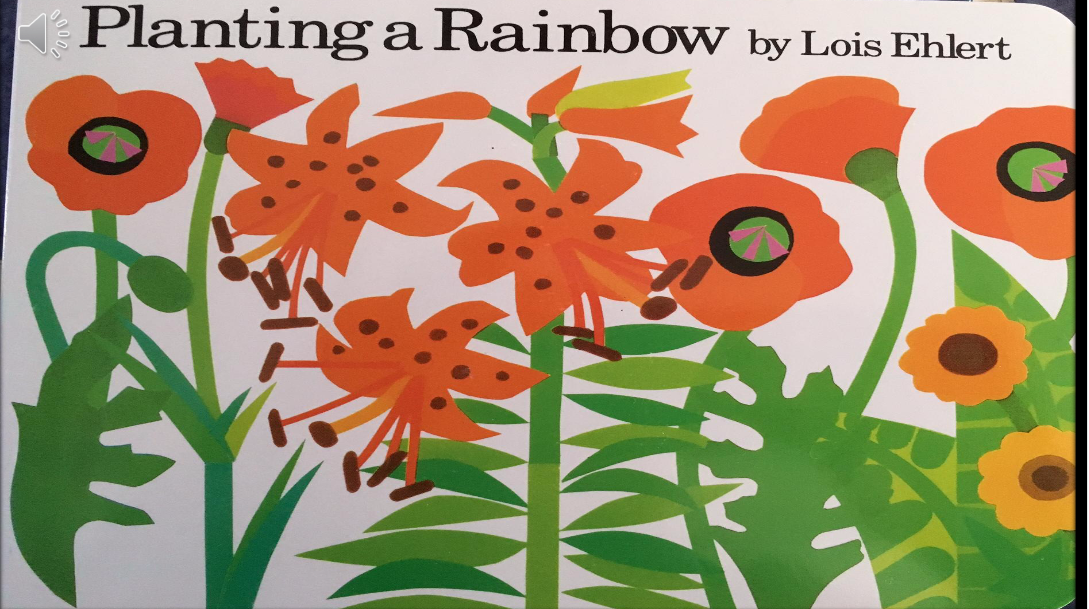
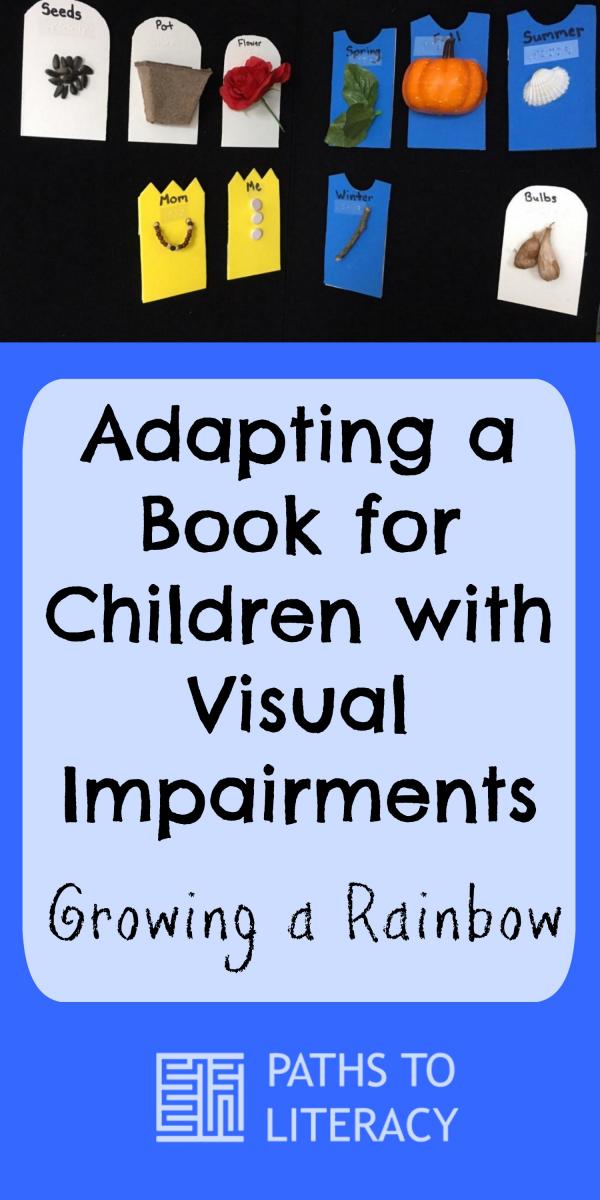

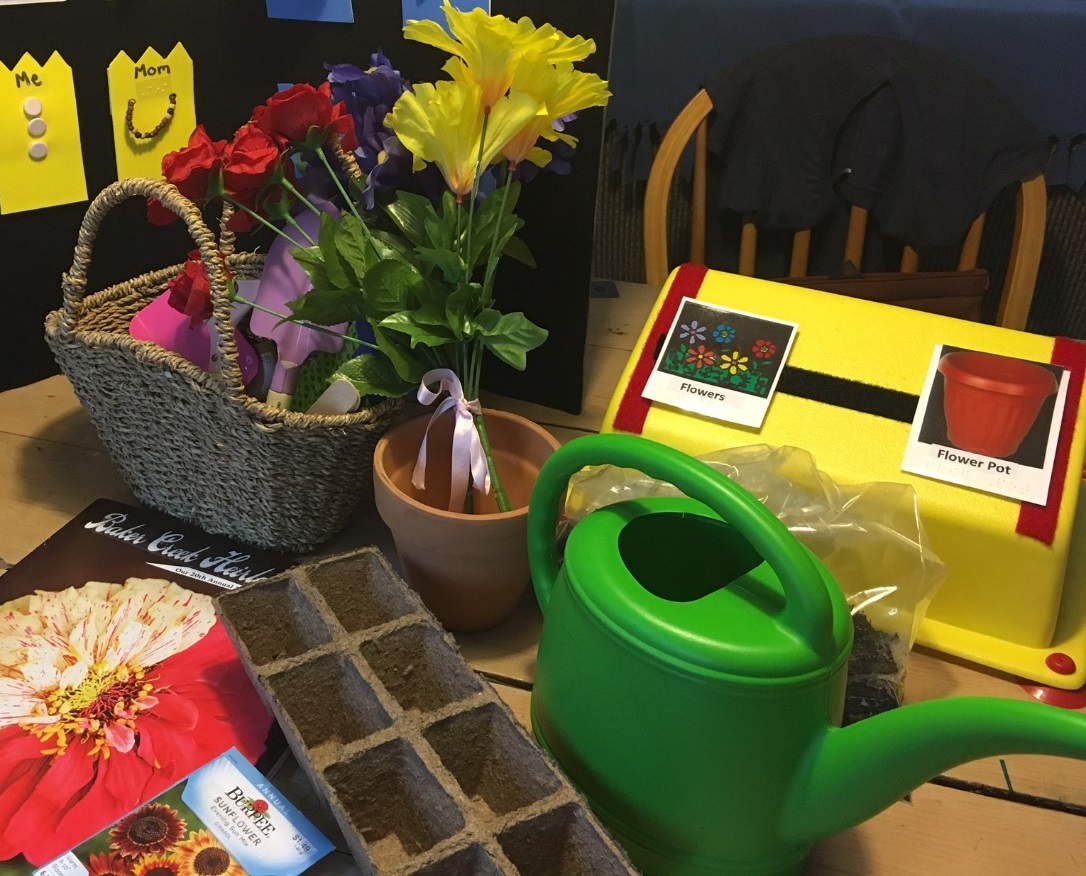
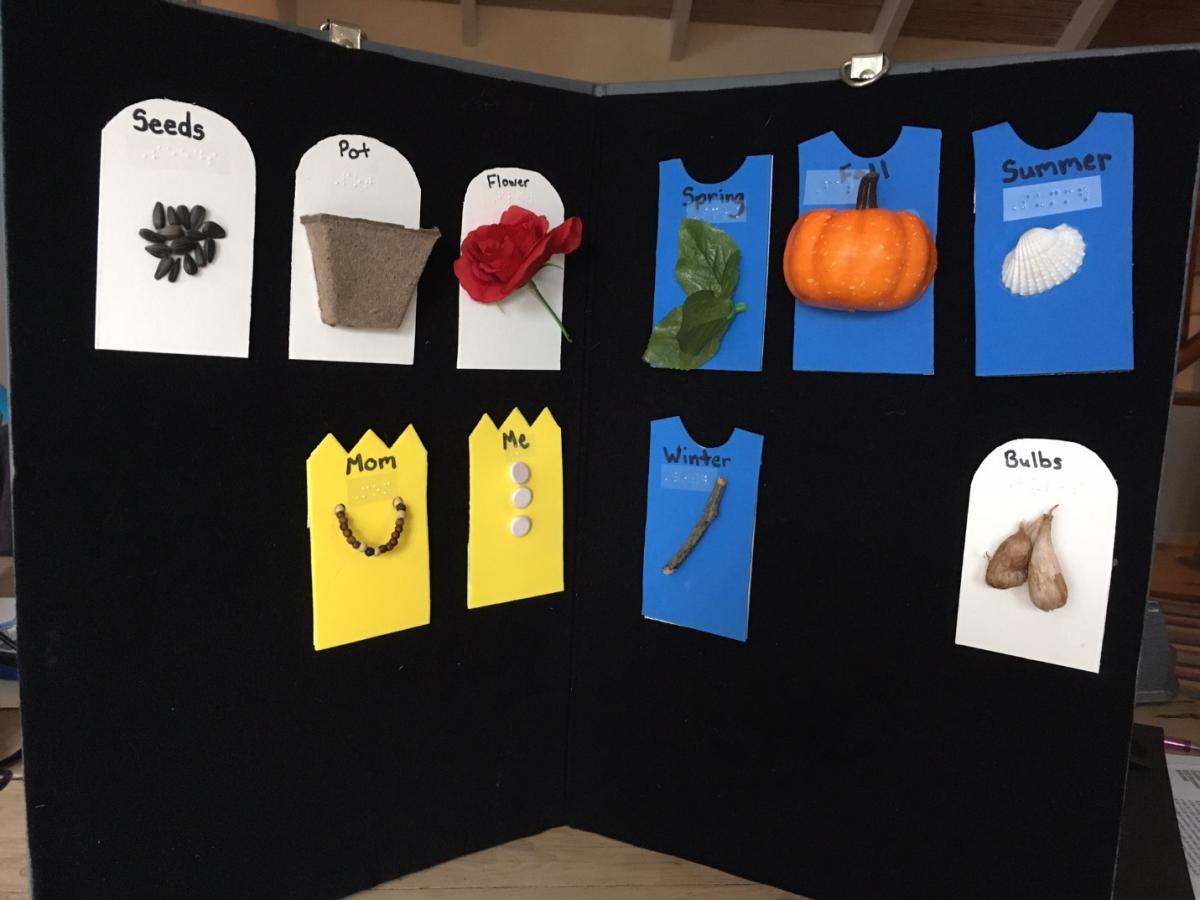
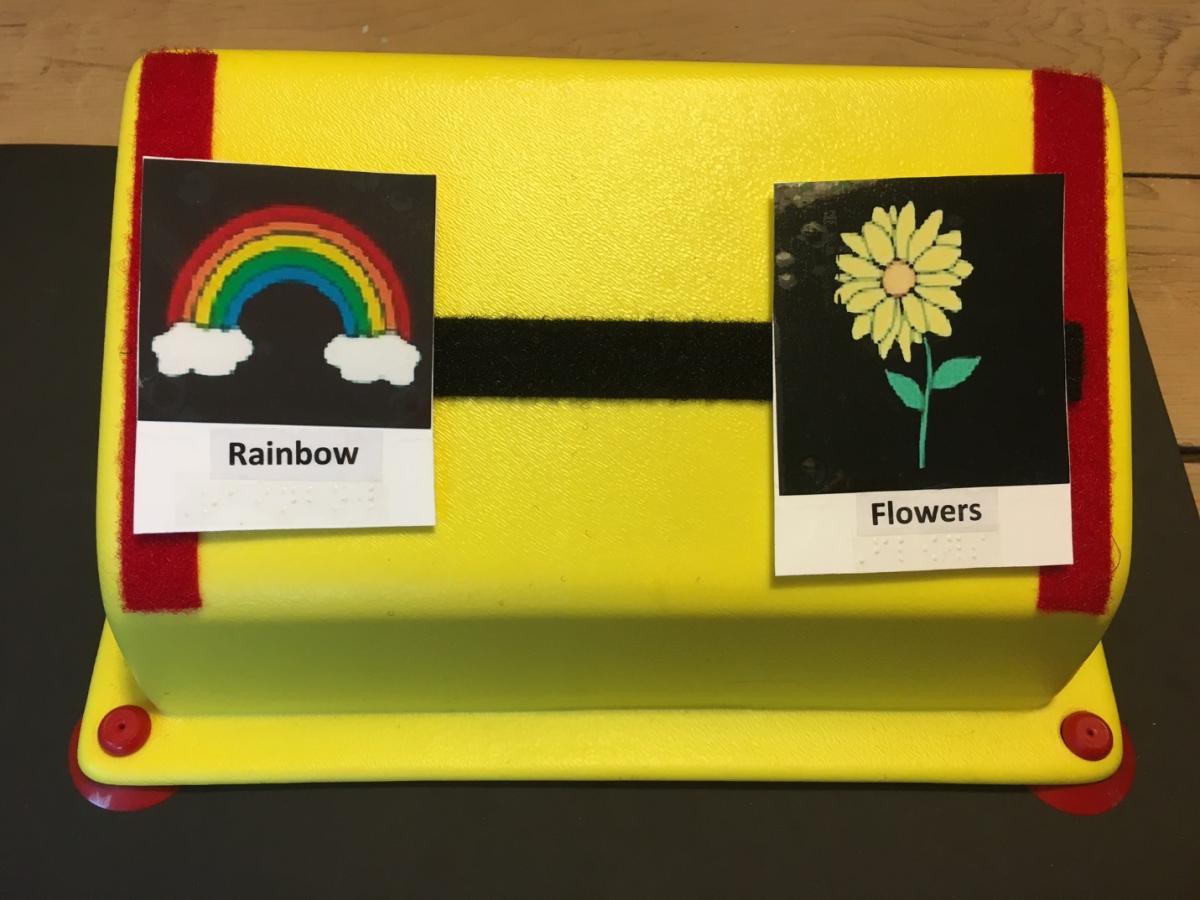

Comments
Grow a Rainbow